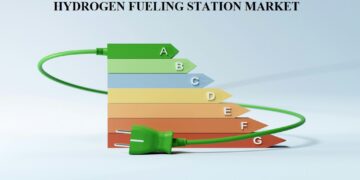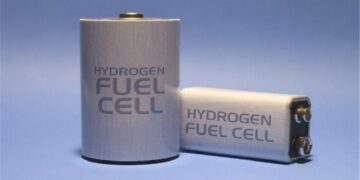The Swedish nuclear regulator has said it believes the country’s radioactive waste management company can meet all the safety and radiation protection requirements for its planned used nuclear fuel encapsulation plant next to the Clab interim storage facility in Oskarshamn.
Svensk Kärnbränslehantering AB (SKB) submitted applications to build the country’s first repository for used nuclear fuel, together with a plant to encapsulate the fuel prior to disposal, to Sweden’s Radiation Safety Authority (Strålsäkerhetsmyndigheten, SSM) in March 2011. The integrated facility – the encapsulation plant and the Clab interim storage facility – is referred to in SKB’s application as Clink. SKB has since made both clarifications and additions to the applications. The company has also submitted an application to extend the storage capacity of the Clab facility from the current 8000 tonnes of fuel to 11,000 tonnes.
The applications are being reviewed by the SSM and the Land and Environment Court in Stockholm. The SSM is considering questions of nuclear safety and radiation at the facilities as laid down in the country’s Nuclear Activities Act. The review undertaken by the Land and Environment Court is based on the Environment Code.
The SMM has now outlined its preliminary findings from its ongoing review of SKB’s application to build and operate the encapsulation plant.
Ansi Gerhardsson, head of radiation safety at SSM, said: “Our assessment is that SKB has the potential to meet the agency’s radiation safety for both the construction and operation of the encapsulation plant and to store more used fuel in Clab. If the government gives the facility a licence, SKB will, however, need to take steps to create these conditions and develop a more detailed safety report for the facility.”
SMM noted that its review of the Clink facility only covers the plant itself and not the method of encapsulating the used fuel in copper canisters. It said its assessment of the method and the repository’s long-term security will be presented when it submits its opinion to the Land and Environment Court in the coming months.
Helene Åhsberg, project manager for licensing at SKB, welcomed the regulator’s initial findings, saying: “It is gratifying that the SSM is of the opinion that the Clink project has the potential to meet the agency’s requirements. Extensive additions have been made during the permitting process so far and it therefore feels good that the SSM now confirms that we have done it right.”
She added, “The licensing process is a gradual process, and now we have got important points to take with us in the future work. Continuous improvement and gradual increase in the level of details is important to us, and is a natural part of the incremental licensing process.”
In June 2015, the SMM preliminarily said it believed SKB can meet all the safety and radiation protection requirements for its planned used fuel repository. The Land and Environment Court concluded in December that SKB’s application for construction of the used nuclear fuel encapsulation plant and repository was complete and said it would begin its review.
The SSM is scheduled to issue its final opinion on the repository and encapsulation plant in 2017. The final decision to authorize the project will be made by the government, which will base its decision on the assessments of both the SSM and the Land and Environment Court. However, before the government makes a final decision, it will consult with the municipalities of Oskarshamn and Östhammars, which have the power to veto the application.
Once the government has made its decision, the application will again be referred to SSM and the court, which will stipulate the terms and conditions for the facilities.
SKB currently anticipates starting construction of the repository and encapsulation plant sometime in the early 2020s. The facilities are expected to take some ten years to complete.






































